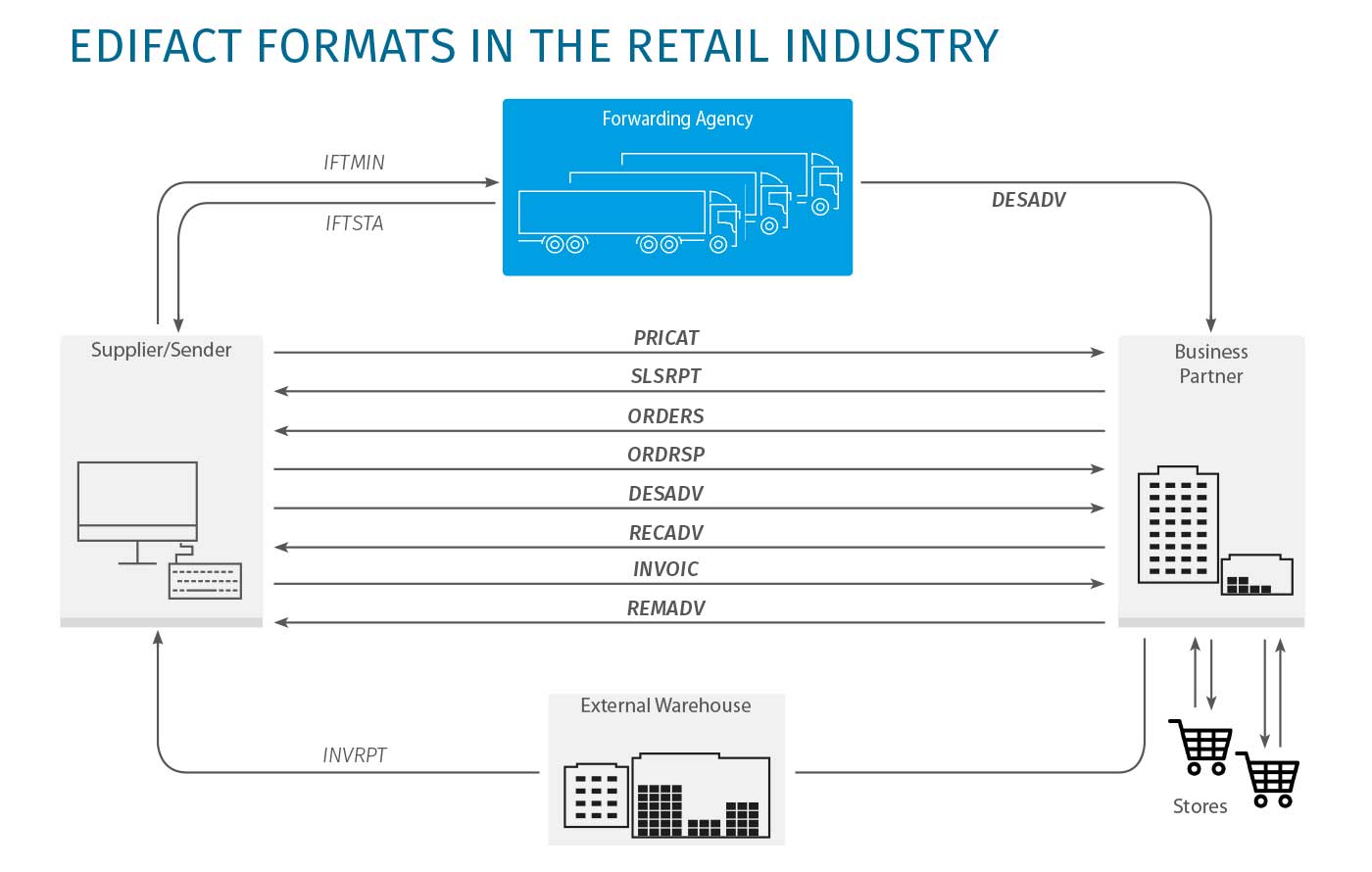Electronic data exchange in trade and retail
Softzoll offers your company the necessary industry expertise and technological skills for all EDI requirements
In the trade sector, the supply chain usually runs through a whole number of intermediate stations, so automated electronic data exchange is becoming increasingly important in this industry. The goods’ journey from producer to retailer shelves and finally the consumer is a long one; with paper-based document exchange, integration gaps are almost inevitable here, increasing the likelihood of errors. It is no coincidence that digital document exchange has been replacing paper-based processes in the trade industry for more than 30 years now. One of EDI’s greatest savings potentials in this industry is made possible by leaner organization in the supply chain and more efficient processes.
The data quality requirements for the EDI documents to be exchanged are now similar to those of the automotive supplier industry for the suppliers concerned. In the evaluation profiles as part of the supplier evaluations, the focus is not only on the basic EDI capability, but rather the supplier’s ability to support entire process chains on the EDI side. The insular support of only individual business processes has long since ceased to be sufficient to ensure an error-free flow of business data.
Amazon as an EDI pioneer
Amazon’s approach offers a good example here: Amazon started defining EDI as a strategic tool and core part of its holistic supplier integration very early on. The process chain consisting of ORDERS (order), ORDRSP (order confirmation), DESADV (delivery notification), and INVOIC (invoice) is considered an essential EDI combination. Amazon suppliers would do well to fully support these functions. Although the PRICAT (item master data) process is currently also in demand on Amazon’s part, the focus is clearly on the digital interplay of the four business processes mentioned. There is an interesting phenomenon to observe here: many suppliers report that ranking within Amazon search results improves significantly when all four EDI business processes are supported digitally via EDI. As Amazon is an important revenue guarantor for many companies, this scenario offers a good model for creating an incentive to implement digital document exchange away from classic penalty systems.
The content transmitted via EDI predefined by the customer and the associated challenge of converting high-quality semantics into a continuous guarantee are currently among the greatest challenges facing a modern EDI system. Newcomers in the EDI environment, in particular, tend to experience very quickly that the trading partners’ tolerance for errors is almost less than zero. The validation systems preceding the actual document processing are not only limited to the format-related review of a correct EDI or EDIFACT syntax, but rather the digital documents are dissected by often highly complex automatic validation mechanisms on the semantic level. Here, any content-related error causes the individual document or, in the worst case, all documents included in a collective document (see, for example, Edeka’s rounding problem), to be rejected.
From a strategic point of view, the ERP system used in each case should be the leading system, as a reservoir of customer-specific expertise so to speak. Ideally, the ERP outputs the data in such a way that the EDI subsystem “only” has to convert it into the various partner formats. Unfortunately, this is not very realistic in practice. It also contradicts the idea of maintaining a standardized global interface for each business process on the ERP side. An intelligent EDI system must therefore de facto be able to consolidate partner-specific features as required and also generate the required EDI content in extreme cases. In addition to the correct semantics, the logic of the EDI document also plays a key role (e.g., partner-specific representation of the packaging materials, etc.).
Softzoll supports you in all challenges typical for the industry
The role of an intelligent EDI system should be to subsume the customer-specific validation checks prior to sending the actual EDI messages on the supplier side, i.e., to anticipate the main review routines that await the document when it is received on the customer side and to weed out those documents that do not meet the recipient criteria. At the same time, however, all documents that have passed the validation check on the sender side without complaint must be sent. To be able to meet these challenges and translate them into the right solutions, the EDI provider must understand the industry and its processes. Softzoll’s experts have years of industry expertise and excellent technological skills to provide your company with the right solutions and all the answers to any questions concerning electronic data interchange.


